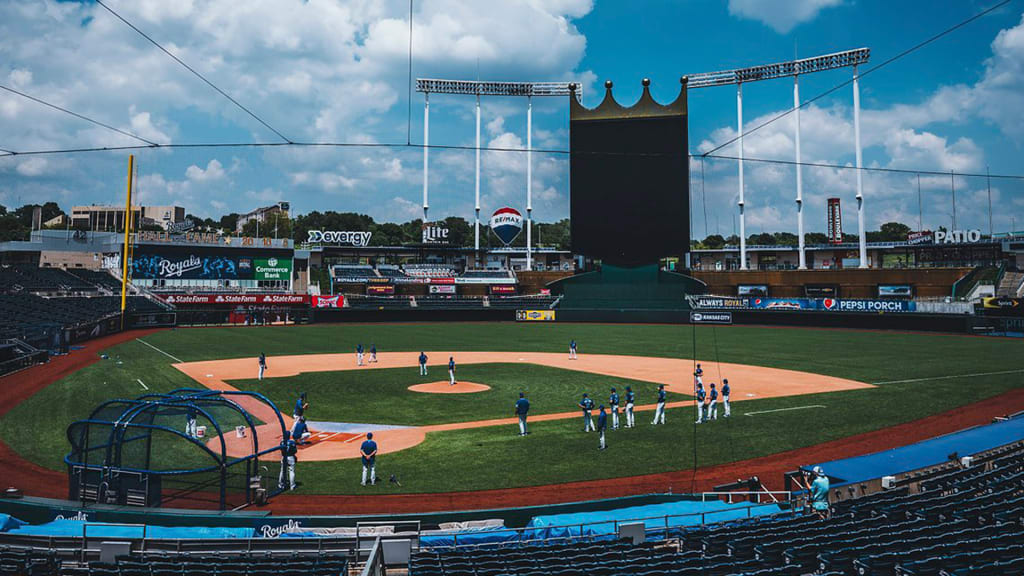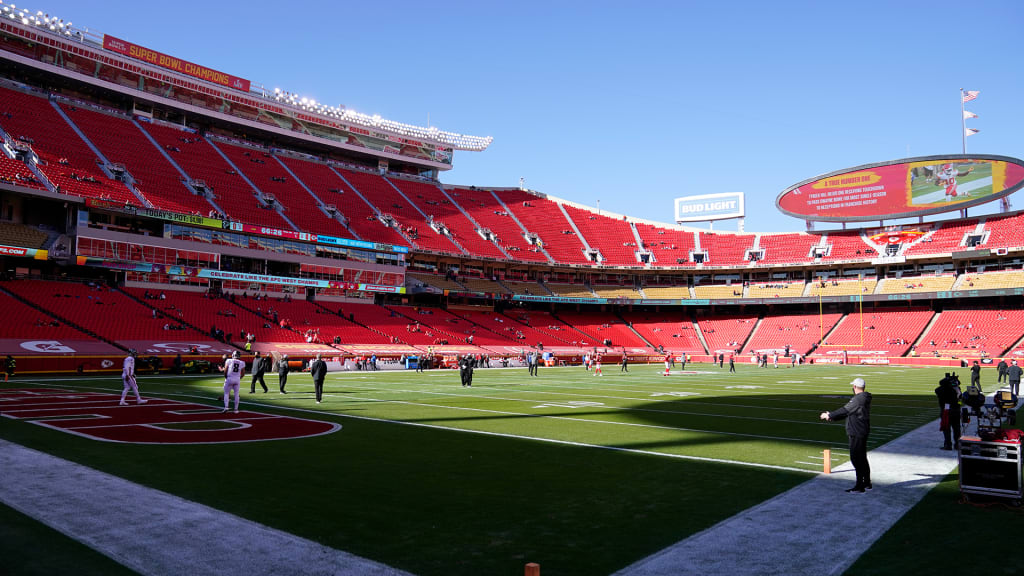
With the Kansas City Chiefs set to play the Tampa Bay Buccaneers in Super Bowl LV on Sunday -- and with the Chiefs' chance to repeat as champions -- Royals support has been strong. On Wednesday, former Royal and current Rays outfielder Brett Phillips made a bet with Kansas City catcher Salvador Perez: If Tampa Bay wins, Perez has to wear a Bucs jersey during batting practice before the Royals play the Rays this season. If Kansas City wins, Phillips will wear a Chiefs jersey.
When the Chiefs won the American Football Conference Championship Game on Jan. 24, the Royals and a number of their players tweeted their excitement.
They want to support their neighbors, after all.
Kauffman Stadium and Arrowhead Stadium, where the Chiefs play, sit across the parking lot from each other at the Truman Sports Complex, about six miles east of downtown Kansas City. The concept of two stadiums was relatively new at the time the complex was built in the late 1960s and early '70s.
Here’s how the complex came to be, and how the Chiefs and Royals set the standard for sports teams across the country:
Opened in 1923 at Brooklyn Avenue and 22nd Street, Municipal Stadium was the original home of the Chiefs and the Kansas City Athletics. In the late '60s, the teams were looking for funding for new stadiums. A’s owner Charlie Finley had threatened to leave the city, and after going to the first Super Bowl, the Chiefs needed a new stadium, too. As part of the National Football League-American Football League merger set for '70, teams were required to have 50,000-seat stadiums. Municipal held about 40,000.
Fearing that Finley would move the A’s, Chiefs owner Lamar Hunt and team president Jack Steadman didn’t want a cookie-cutter stadium like they saw all over the country during that age -- stadiums that would be built for both football and baseball teams. Denver architect Charles Deaton suggested building side-by-side stadiums for the two sports, with each stadium customized to its needs.

After much politicking, Jackson County voters approved $102 million in general bonds for the sports complex that was to be built in the Leeds area at the intersection of I-70 and I-435. Construction quickly started rolling.
But the Chiefs’ fears that Finley would move the A’s quickly turned out to be true. The owner had publicly sought to relocate, but American League owners hadn’t approved his previous proposals. Finally, after Kansas City finished last in its division in 1967, the owners approved the relocation of the Athletics to Oakland. But baseball was not gone from Kansas City. On Oct. 18, 1967, the AL awarded expansion franchises to Kansas City and Seattle. A few months later, the league chose Marion Laboratories executive Ewing Kauffman for ownership in Kansas City, and the Royals were born.
With the Royals in place, the club was able to build its new stadium the way it saw fit. It mimicked Anaheim Stadium and Dodger Stadium in some ways, though Kauffman had two special additions -- a 12-story crown scoreboard and a 322-foot-wide waterfall, signature looks of the stadium today.
The original plan designed by Deaton called for a rolling roof that could cover both stadiums, but that plan never came to fruition -- not even in 2006 when Jackson County voters approved a tax increase to raise money to renovate the Truman Sports Complex but rejected a measure for the roof. A little-known feature of the Truman Sports Complex is the tunnel that connects the two stadiums, located below parking lot M.
Arrowhead Stadium opened on time, in 1972, while Royals Stadium opened in ’73. Throughout the 1960s and early '70s, circular dual-purpose stadiums were the standard for sports around America. So Kansas City’s complex was the first of its kind, featuring shared parking lots and highway infrastructure. And it set the tone for future stadium construction, with football and baseball venues designed specifically for that sport.
